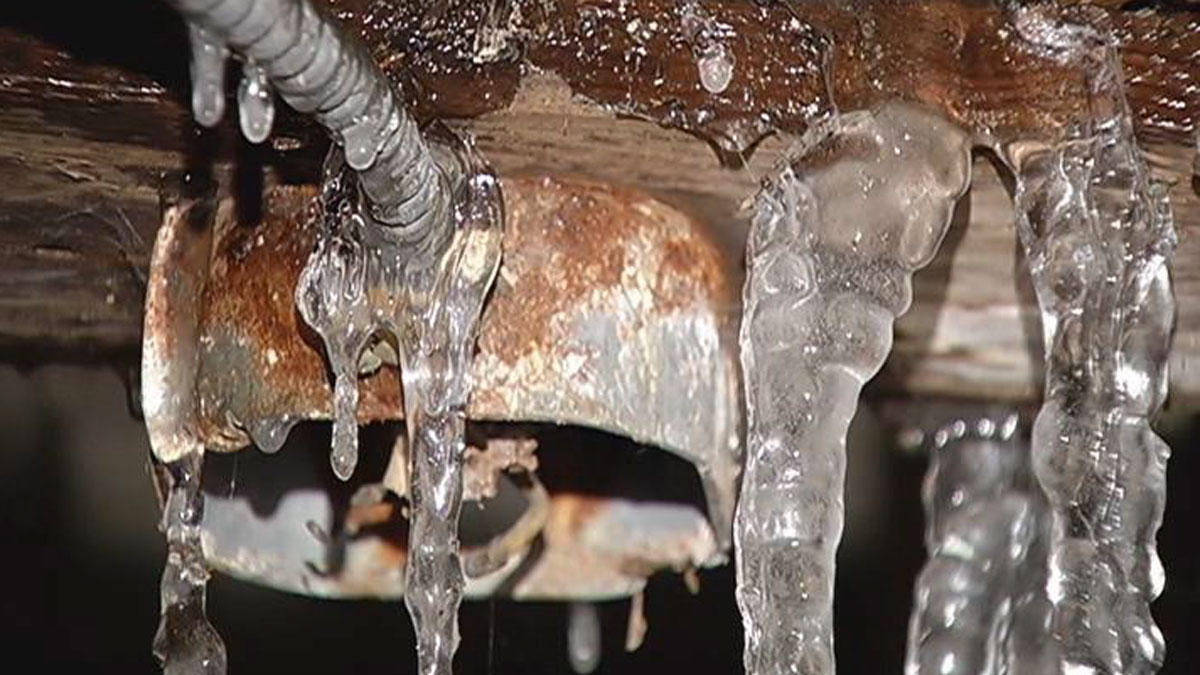How to Keep Your Pipes from Freezing Damage: Essential Advice
How to Keep Your Pipes from Freezing Damage: Essential Advice
Blog Article
Each person has got his or her own theory when it comes to How To Avoid Freezing Pipes.

Winter can ruin your pipes, specifically by freezing pipelines. Here's just how to prevent it from occurring and what to do if it does.
Intro
As temperature levels decrease, the danger of frozen pipelines rises, potentially bring about pricey fixings and water damage. Comprehending just how to prevent frozen pipelines is critical for homeowners in cool environments.
Comprehending Frozen Pipes
What causes pipelines to ice up?
Pipelines ice up when exposed to temperatures listed below 32 ° F (0 ° C) for extended periods. As water inside the pipes ices up, it broadens, taxing the pipeline wall surfaces and possibly triggering them to break.
Dangers and problems
Frozen pipes can lead to water supply disturbances, residential or commercial property damage, and pricey repair services. Ruptured pipelines can flooding homes and trigger considerable architectural damage.
Signs of Frozen Water Lines
Recognizing icy pipes early can avoid them from rupturing.
How to determine frozen pipelines
Seek reduced water circulation from taps, unusual smells or sounds from pipes, and noticeable frost on revealed pipelines.
Prevention Tips
Insulating vulnerable pipelines
Cover pipes in insulation sleeves or use warmth tape to secure them from freezing temperatures. Focus on pipelines in unheated or outside locations of the home.
Home heating techniques
Maintain interior rooms adequately warmed, especially locations with plumbing. Open up cabinet doors to permit warm air to circulate around pipelines under sinks.
Protecting Outside Plumbing
Garden tubes and outdoor taps
Disconnect and drain yard hoses before winter months. Install frost-proof faucets or cover exterior faucets with protected caps.
What to Do If Your Pipelines Freeze
Immediate activities to take
If you suspect frozen pipes, maintain taps open up to ease stress as the ice thaws. Make use of a hairdryer or towels taken in hot water to thaw pipes slowly.
Long-Term Solutions
Structural adjustments
Consider rerouting pipes far from exterior walls or unheated locations. Add added insulation to attic rooms, cellars, and crawl spaces.
Upgrading insulation
Invest in premium insulation for pipelines, attics, and wall surfaces. Proper insulation assists keep consistent temperature levels and reduces the danger of icy pipes.
Conclusion
Preventing icy pipelines requires proactive actions and quick responses. By recognizing the reasons, signs, and safety nets, house owners can protect their pipes during winter.
5 Ways to Prevent Frozen Pipes
Drain Outdoor Faucets and Disconnect Hoses
First, close the shut-off valve that controls the flow of water in the pipe to your outdoor faucet. Then, head outside to disconnect and drain your hose and open the outdoor faucet to allow the water to completely drain out of the line. Turn off the faucet when done. Finally, head back to the shut-off valve and drain the remaining water inside the pipe into a bucket or container. Additionally, if you have a home irrigation system, you should consider hiring an expert to clear the system of water each year.
Insulate Pipes
One of the best and most cost-effective methods for preventing frozen water pipes is to wrap your pipes with insulation. This is especially important for areas in your home that aren’t exposed to heat, such as an attic. We suggest using foam sleeves, which can typically be found at your local hardware store.
Keep Heat Running at 65
Your pipes are located inside your walls, and the temperature there is much colder than the rest of the house. To prevent your pipes from freezing, The Insurance Information Institute suggests that you keep your home heated to at least 65 degrees, even when traveling. You may want to invest in smart devices that can keep an eye on the temperature in your home while you’re away.
Leave Water Dripping
Moving water — even a small trickle — can prevent ice from forming inside your pipes. When freezing temps are imminent, start a drip of water from all faucets that serve exposed pipes. Leaving a few faucets running will also help relieve pressure inside the pipes and help prevent a rupture if the water inside freezes.
Open Cupboard Doors
Warm your kitchen and bathroom pipes by opening cupboards and vanities. You should also leave your interior doors ajar to help warm air circulate evenly throughout your home.

As a devoted person who reads about Helpful Tips to Prevent Frozen Pipes this Winter, I thought sharing that piece of content was really helpful. Feel free to take the opportunity to distribute this page if you appreciated it. Thanks so much for taking the time to read it.
Click Here Report this page